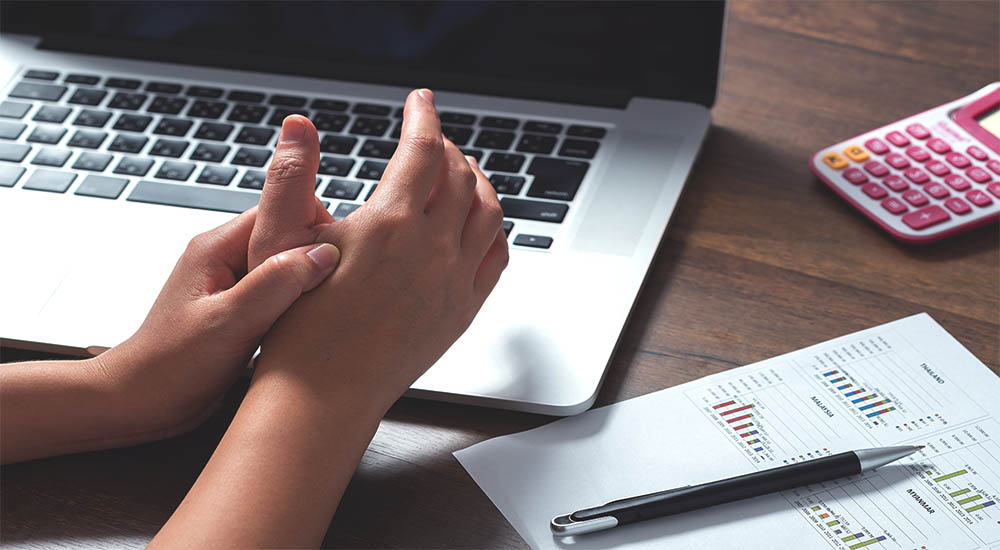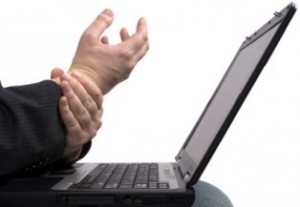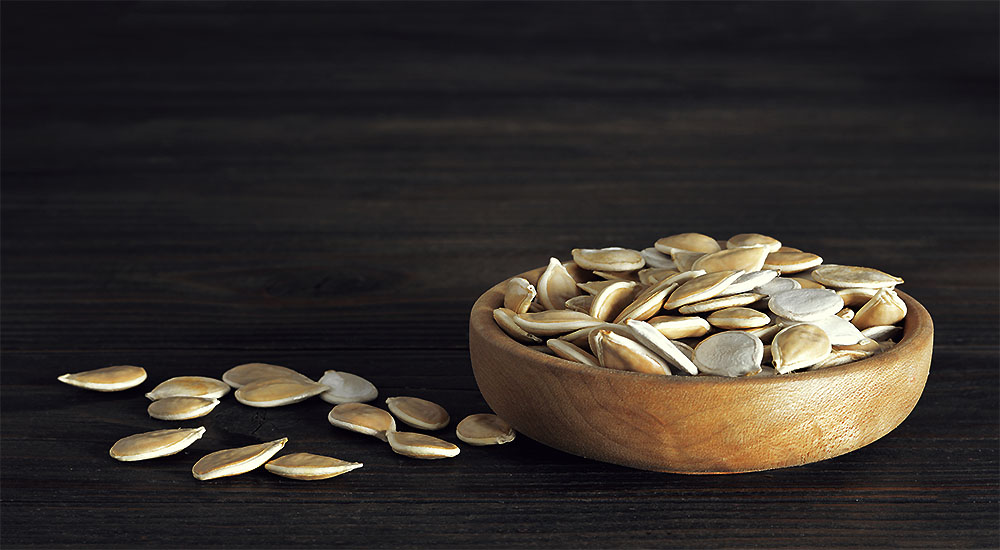Typing with Hand & Wrist Pain? Here’s Your Solution!

Computer Work is Not Natural

I suppose that encountering such an abundance of hand and wrist pain comes part and parcel with practicing in Silicon Valley. We live in the hub of computers and hi-tech and those who work on them do so for long hours.
As humans, our bodies are really not designed to do extensive computer work, and perhaps by Friday afternoon, such a fact becomes readily apparent! But we do what we must and adapt to the occupation we have. So naturally, after a certain period of time, there is the fallout from this unnatural adaptation, and in this case, the hands and the wrists take the brunt.
The Graceful & Complex Hand
Our hands and wrists have muscles with long tendons (tendons are the ends of the muscles that attach to bones). These tendons travel over multiple, small bones with ridges, nooks, and crannies. They also compete for space with nerves, arteries, and veins.
To protect these tendons from friction over the bones and other structures, they have a coating that is smooth and lined with fluid. This helps the tendons to glide and perform their function successfully. These tendons are also lined with a myriad of small nerve cells that can be likened to chargers and batteries. These chargers give tendons important information on touch, pressure, temperature, vibration, and many, many more things.
Modern technology has tried endlessly to come up with a similar functioning design to our hands and wrists to help people with amputations. But we have not been able, thus far to reach that amazing level of perfection.
On the other hand, we have been quite successful in designing legs and feet for those afflicted with their loss. It just goes to show how complex the hand and its functions can be. We use our hands for everything. Many of us have jobs that exist because of our hands. Sometimes you don’t realize how much a body part is used until it starts bothering you.
Where does the Pain Come From?
Getting back to the computer work, the question to ask is why is it causing pain at the wrist and hands? The constant tapping of the fingers over the keyboard or the mouse causes constant vibration and pressure. This in turn causes the firing of the little chargers over a prolonged period of time. The chargers are now working overtime without any rest. Their solution?
Some of them stop working or go into hibernation as a protective mechanism. This sends wrong messages to the tendons and they start contracting slowly and they may become very sluggish. That in turn affects the fluid covering of the tendon and it becomes sticky and inflamed.
Once it reaches the stage of inflammation, pain is now involved. The pain may occur sporadically, to begin with, and become continuous, even at rest, as the condition worsens. Activities of daily living and activities at work are all affected and that can make for a very unhappy individual.
What to do for the Pain
At this point, many people turn to pain relievers. But the thing to know is that these types of medications have dangerous side effects and do nothing to get to the root cause of the problem. We therefore do not recommend them.
Even with patients in pain, we instead use natural anti-inflammatories that provide relief but without the dangerous side effects. A patient’s signs and symptoms may range from cramping, tingling, numbness, dull achy pain to sharp pain. Grasping and gripping objects can be painful or the hand can feel weak performing certain tasks.
Many patients observe that they are dropping simple objects like a cup of coffee, water bottles, etc. Others are unable to open jars, doors or start their cars with the keys. Some patients experience clicking sounds of their wrists and hands, while still others complain that their fingers get locked in certain positions.
Don’t Wait for the Problem to Get Severe
Regardless of the symptom or symptoms involved, patients should not wait until they get severe to seek out treatment. Hand structure and function are very complex, so maintaining it in its original and healthy form is of prime importance if you wish to enjoy optimally functioning hands for the rest of your life.
At the slightest notice of any symptom, be it pain, cramping or tingling, the first thing to do is check with your local physician and ask for a recommendation for physical therapy. Here at Root Cause Medical Clinic, we are fortunate to have a medical doctor ‘in house’ so you don’t need to see an outside doctor first. But if you don’t live locally then know that the physical therapist should have training in the management of wrist and hand disorders.
What to Expect from A Doctor of Physical Therapy
The physical therapist will do a comprehensive evaluation that involves a battery of tests for flexibility and strength, not only for the tendons and muscles but for grip, grasp and pinch, sensations, and other functions. Once they have all the data, they devise a plan of care. This will employ a lot of manual “hands-on work”, mobilizations of the joints, pain management as required with ultrasounds, natural therapies, etc.
The physical therapist also supervises specific hand exercises. I know that it may seem odd that one has to exercise even the small muscles of the hand and wrist but when I show patients how weak their tendons and muscles have become through the results of testing, they are initially shocked and quickly become willing to work hard at getting stronger hands and fingers.
To effectively exercise these small muscle groups, we utilize some simple yet interesting equipment and then follow up with a home exercise program. I also insist on a stretching regimen at work and at home. This is so important that the patient is encouraged to maintain a log of his or her stretching.
With a well-executed combined therapy approach of therapy, the patient should enjoy a full recovery within a short period of time. The recovery not only occurs in the form of relief of the symptoms, but the chances of them recurring are also decreased because a complete program will have addressed the correction of the underlying root cause of the problem.
While it is true that this does nothing to change the fact that the job is still going to remain the same and it will continue to cause stress on the hands, fingers, and wrists, the good news is that your hands will be better equipped with their newfound strength and flexibility, to take on the challenges of using the mouse and keyboard. Just don’t forget to check-in and get an occasional tune-up for those hard-working digits!
Do you need help with your health?
We have the diagnostic and testing tools, the clinical experience, and a different medical approach to discovering the root cause of why you have the symptoms that are bothering you. As long as you are ready to make some dietary and lifestyle changes, we can help you. We will "hold your hand" through the changes, step by step, to make each step an easy one. We are located in Clearwater, FL, at 1000 S Ft Harrison, at the corner of Ft. Harrison Ave. and Magnolia St. There is plenty of parking space directly accessible from Ft Harrison. If it is not convenient for you to come to Root Cause Medical Clinic, we offer telehealth/telemedicine consultations to residents of certain states. Call us for details.
Contact us for a Consultation – Call 727-335-0400

Dr. Vikki Petersen DC. CCN
Founder of Root Cause Medical Clinic
Certified Functional Medicine Practitioner
Dr Vikki Petersen is a public speaker, author of two books, several eBooks and creates cutting edge content for her YouTube community. Dr Vikki is committed to bringing Root Cause Medicine and its unique approach to restoring health naturally to the world.
Ask a Doctor
Have a health concern you'd like to speak with a doctor about? Or just want clarity on a subject? Ask Us!


